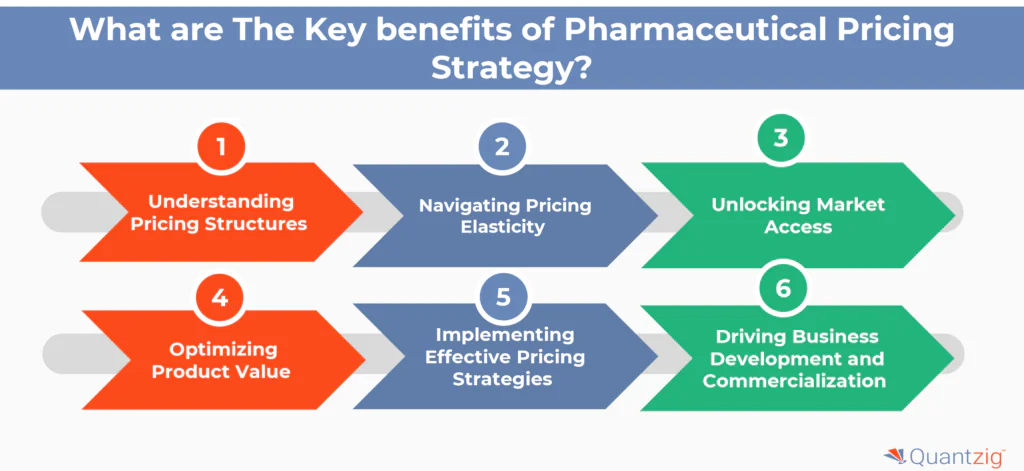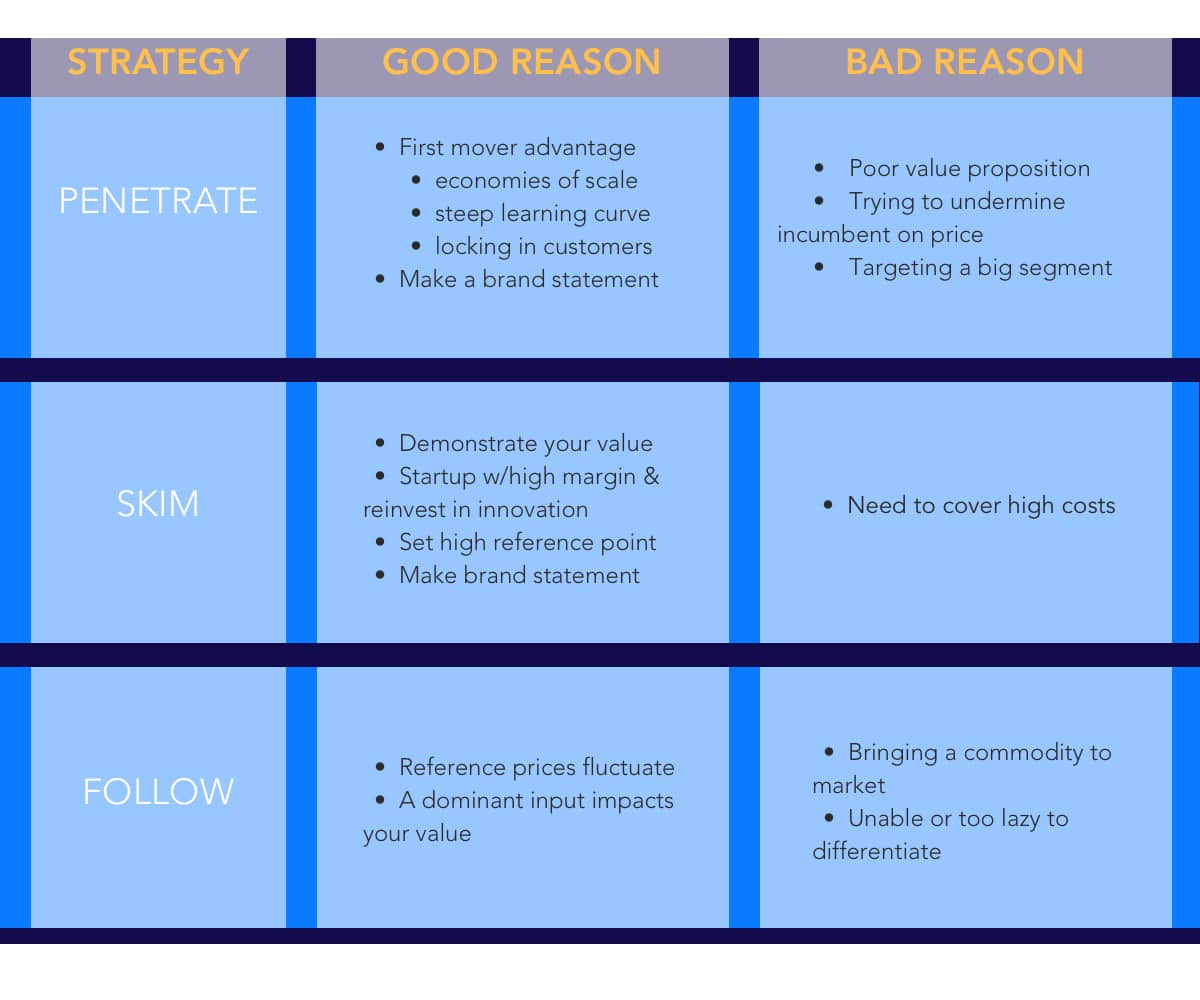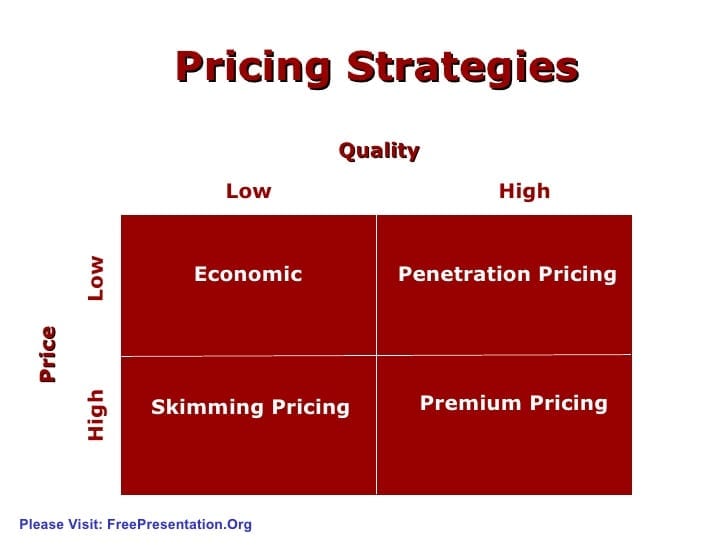Understanding Customer Actions and Its Effect On Your Pricing Strategy
Wiki Article

Master Effective Rates Approaches to Maximize Earnings
In the ever-evolving landscape of commerce, understanding effective rates strategies is important for services intending to maximize earnings. A nuanced understanding of prices psychology can significantly influence consumer actions and getting decisions.Comprehending Rates Psychology
Comprehending rates psychology is critical for organizations intending to optimize their prices techniques. This area takes a look at how customers perceive costs and just how these understandings influence their getting decisions. Trick concepts in pricing psychology include the anchoring result, where the preliminary cost presented serves as a recommendation point for customers, and the concept of rate sensitivity, which varies among various consumer sectors.Additionally, organizations can take advantage of the concept of regarded value, where the viewed benefits of a product and services can warrant a higher price point. Premium prices can develop a mood of exclusivity, bring in customers who connect higher prices with remarkable top quality. On the various other hand, mental prices, such as establishing a price at $9.99 as opposed to $10, can significantly impact consumer actions by making prices show up extra eye-catching.
Furthermore, deficiency and necessity can enhance the viewed worth of items, motivating quicker acquiring choices. Recognizing these emotional triggers makes it possible for organizations to formulate pricing techniques that not just drive sales but likewise foster customer commitment. Thus, mastering pricing psychology is important for reliable rates approach formula, bring about enhanced success and market positioning.
Carrying Out Value-Based Prices

Next, section your customers based on their readiness to pay and the value they regard. By doing so, you can tailor offerings and rates strategies to straighten with different segments.
After gathering understandings, set prices that mirror the optimum amount a consumer is ready to pay, making certain that they view a fair exchange for the value got. Communicate the worth proposition efficiently, highlighting the advantages and differentiators of your offering. Finally, continually keep an eye on market conditions and customer responses to fine-tune your rates approach in time - Pricing Strategy. By implementing value-based prices, services can boost profitability while cultivating long-lasting consumer loyalty.
Checking Out Dynamic Pricing Designs
In today's quickly transforming market landscape, vibrant rates models have become an effective strategy for services seeking to optimize income and reply to fluctuations in need. These versions enable firms to adjust their costs in real-time based upon numerous variables such as customer behavior, market trends, and inventory levels. By leveraging data analytics and formulas, services can recognize optimal pricing factors that make best use of sales while continuing to be competitive.Dynamic rates can take numerous kinds, consisting of time-based rates, where costs change based upon time of day or period, and demand-based pricing, which adjusts prices according to existing customer need. This versatility not only improves productivity yet also improves customer contentment by offering prices that reflect real-time market conditions.
Executing vibrant rates needs a robust technical infrastructure and a deep understanding of consumer segments. Clear communication about prices modifications can aid alleviate consumer dissatisfaction and foster depend on, inevitably leading to continual productivity in a competitive market.
Studying Competitor Rates
Keeping track of competitor rates is important for businesses intending to maintain an one-upmanship in their corresponding markets. By examining competitors' prices approaches, firms can identify market fads, comprehend customer preferences, and readjust their prices appropriately. This evaluation involves celebration information on competitors' costs, promotional techniques, and product offerings to notify prices choices.To successfully assess competitor rates, organizations need to make use of numerous devices and techniques, such as price tracking software, marketing research records, and client feedback. This data can disclose exactly how competitors place their product or services, allowing businesses to differentiate their offerings or take on similar methods to stay relevant.
In addition, it is vital to categorize rivals into indirect and straight rivals. Straight competitors use similar service or products, while indirect rivals might accomplish the very same consumer need with various services. Understanding the subtleties in between these teams will make it possible for businesses to customize their prices techniques better.
Eventually, continuous competitor pricing evaluation is crucial for making educated prices choices. It allows companies to remain nimble in reaction to market shifts, ensuring they can confiscate possibilities and reduce threats connected with rates strategies.
Examining Pricing Performance
Comprehending how competitor prices affects market dynamics causes a natural emphasis on examining rates performance within one's own service. This assessment is crucial for identifying locations of strength and possibilities for improvement, ultimately boosting productivity.
Additionally, carrying out normal pricing audits can look at this now disclose discrepancies between anticipated and real efficiency. This involves comparing rates information across various segments and networks to recognize variances and recognize trends. Integrating consumer responses can provide understandings into perceived worth versus actual rates, ensuring positioning with market expectations.
Finally, leveraging information analytics devices can promote much deeper understandings right into pricing efficiency, enabling businesses to make data-driven changes (Pricing Strategy). By consistently examining pricing efficiency, organizations can adjust to market adjustments and maximize their strategies, ensuring sustained earnings in a competitive landscape
Conclusion
Reliable pricing techniques are important for making best use of profit in an open market. By leveraging pricing psychology, services can boost regarded value and dressmaker rates to varied client segments. The adoption of value-based and dynamic pricing versions promotes real-time adjustments based upon need and consumer readiness to pay. Additionally, continuous analysis of competitor prices and performance metrics makes certain calculated dexterity. Ultimately, a thorough strategy to pricing not just drives success however likewise fosters customer fulfillment and loyalty.Comprehending rates psychology is critical Recommended Site for organizations intending to maximize their rates techniques. Comprehending these psychological triggers makes it possible for organizations to develop rates strategies that not just drive sales however also foster client commitment. Therefore, mastering pricing psychology is essential for reliable prices technique solution, leading to improved profitability and market positioning.
By examining competitors' rates strategies, firms can identify market fads, Clicking Here recognize consumer choices, and adjust their prices accordingly. By leveraging rates psychology, services can boost perceived value and tailor pricing to diverse client sections.
Report this wiki page